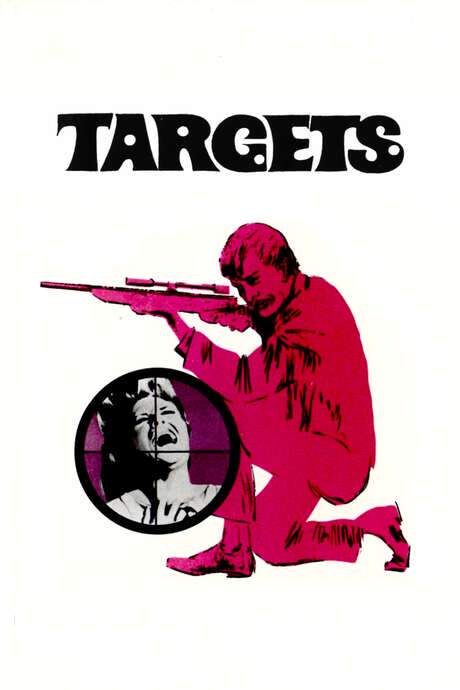
Targets
Year: 1968
Runtime: 90 mins
Language: English
An aging horror‑movie icon whose fame has faded finds his life entangled with that of a seemingly ordinary young man who embarks on a psychotic shooting spree through Los Angeles. Their intersecting paths spark a deadly cat‑and‑mouse game that blurs fame and madness.
Warning: spoilers below!
Haven’t seen Targets yet? This summary contains major spoilers. Bookmark the page, watch the movie, and come back for the full breakdown. If you're ready, scroll on and relive the story!
Timeline & Setting – Targets (1968)
Explore the full timeline and setting of Targets (1968). Follow every major event in chronological order and see how the environment shapes the story, characters, and dramatic tension.
Last Updated: October 04, 2025 at 19:05
Main Characters – Targets (1968)
Meet the key characters of Targets (1968), with detailed profiles, motivations, and roles in the plot. Understand their emotional journeys and what they reveal about the film’s deeper themes.
Last Updated: October 04, 2025 at 19:05
Major Themes – Targets (1968)
Explore the central themes of Targets (1968), from psychological, social, and emotional dimensions to philosophical messages. Understand what the film is really saying beneath the surface.
Last Updated: October 04, 2025 at 19:05
Unlock the Full Story of Targets
Don't stop at just watching — explore Targets in full detail. From the complete plot summary and scene-by-scene timeline to character breakdowns, thematic analysis, and a deep dive into the ending — every page helps you truly understand what Targets is all about. Plus, discover what's next after the movie.
Targets Summary
Read a complete plot summary of Targets, including all key story points, character arcs, and turning points. This in-depth recap is ideal for understanding the narrative structure or reviewing what happened in the movie.



